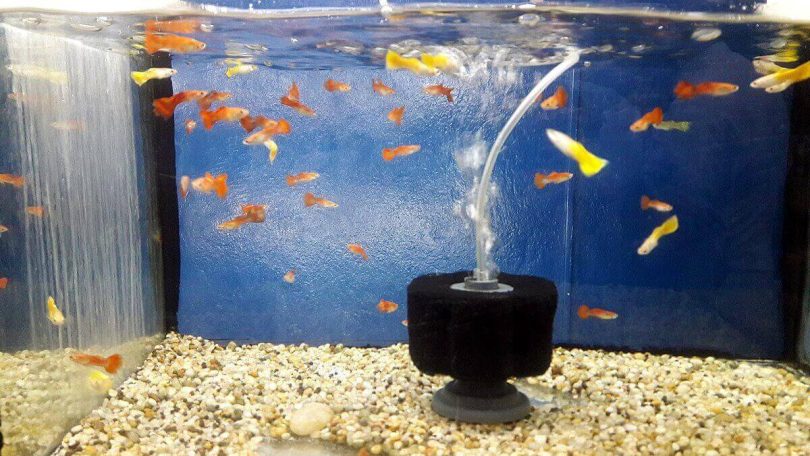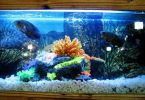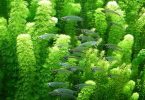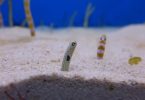Table of Contents
Are you eager to set up a new fish tank but wondering how long it will take to cycle before you can add fish? The process of cycling a fish tank is crucial for establishing a healthy and stable aquatic environment for your pets.
In this article, we will explore the factors that affect the length of time it takes to cycle a fish tank, including the size of the tank, the type of filter used, and the presence of live plants.
We’ll also discuss the importance of monitoring water parameters during the cycling process and how to speed up the process if needed.
Whether you’re a seasoned aquarist or a beginner, read on to discover how long it takes to cycle a fish tank and ensure the health of your aquatic pets.
Nitrogen Cycle
What is the Nitrogen Cycle?
The nitrogen cycle is a crucial process in maintaining a healthy and balanced fish tank. It is the process in which beneficial bacteria break down fish waste and uneaten food into less harmful compounds, such as nitrate. This process occurs in three stages:
- Ammonia is produced from fish waste and uneaten food.
- Nitrite is produced from ammonia by beneficial bacteria.
- Nitrate is produced from nitrite by beneficial bacteria.
Beneficial bacteria are naturally present in the fish tank, but they need time to establish and grow in numbers to effectively process the waste.
How Long Does the Nitrogen Cycle Take?
The nitrogen cycle can take anywhere from 2 to 8 weeks to establish, depending on various factors such as the size of the tank, the number of fish, and the amount of waste produced.
During this time, it is important to monitor the water parameters regularly, including ammonia, nitrite, and nitrate levels.
To speed up the nitrogen cycle, you can add beneficial bacteria supplements or use live plants in the tank. However, it is important to note that adding too many fish too quickly can overload the beneficial bacteria and cause a spike in ammonia levels, which can harm the fish.
Once the nitrogen cycle is established, it is important to maintain it by performing regular water changes and monitoring the water parameters. This will ensure a healthy and balanced environment for your fish to thrive in.
In summary, the nitrogen cycle is a crucial process in maintaining a healthy fish tank. It takes time to establish, but with patience and proper maintenance, your fish tank will thrive.
Fish Tank Cycling Methods
When setting up a new fish tank, it is important to cycle it properly to establish a healthy environment for your fish. There are several methods of fish tank cycling, each with its own advantages and disadvantages.
In this section, we will discuss the three most common methods of fish tank cycling: fishless cycling, fish-in cycling, and silent cycling.
Fishless Cycling
Fishless cycling is a popular method of cycling a fish tank without any fish. This method involves adding ammonia to the tank to simulate the waste produced by fish. The ammonia is then converted into nitrite and nitrate by beneficial bacteria that establish themselves in the tank.
One advantage of fishless cycling is that it is safe for the fish. Since there are no fish in the tank, there is no risk of harming them with high levels of ammonia or nitrite.
Additionally, fishless cycling can be faster than other methods, as you can control the amount of ammonia added to the tank and speed up the process.
Fish-In Cycling
Fish-in cycling involves adding fish to the tank during the cycling process. This method relies on the fish producing waste that is then converted into nitrite and nitrate by beneficial bacteria.
One disadvantage of fish-in cycling is that it can be stressful for the fish. The levels of ammonia and nitrite can be high during the cycling process, which can harm the fish.
Additionally, fish-in cycling can take longer than fishless cycling, as the fish produce less waste than the amount of ammonia needed to establish the beneficial bacteria.
Silent Cycling
Silent cycling is a newer method of cycling a fish tank that involves using live plants to establish the beneficial bacteria.
This method relies on the plants absorbing the ammonia and nitrite produced by the fish, and converting it into nitrate.
One advantage of silent cycling is that it is a natural method that can create a self-sustaining ecosystem in the tank.
Additionally, silent cycling can be faster than fish-in cycling, as the plants can absorb more ammonia and nitrite than the fish can produce.
In conclusion, there are several methods of fish tank cycling, each with its own advantages and disadvantages.
Fishless cycling is safe for the fish and can be faster than other methods, fish-in cycling can be stressful for the fish and take longer, and silent cycling is a natural method that can create a self-sustaining ecosystem. Choose the method that works best for you and your fish.
Testing and Monitoring
When cycling a fish tank, it is essential to test and monitor water parameters to ensure a healthy environment for your fish.
Testing water parameters is crucial to maintain the right balance of chemicals in the water. Monitoring ammonia and nitrite levels regularly is necessary to prevent fish from getting sick and dying.
Testing Water Parameters
Testing water parameters involves measuring the levels of ammonia, nitrite, nitrate, pH, and other essential elements in the water.
Regular testing of these parameters helps you to understand the condition of your fish tank and take corrective measures if needed.
You can use test kits to measure water parameters. Test kits are readily available in pet stores and online. They are easy to use and provide accurate results. You can use test strips or liquid test kits depending on your preference.
Monitoring Ammonia and Nitrite Levels
Monitoring ammonia and nitrite levels is critical during the cycling process. Ammonia and nitrite are toxic to fish and can cause illness or death.
During the initial stage of cycling, you will notice an increase in ammonia and nitrite levels. As the beneficial bacteria grow, they will convert ammonia into nitrite and then into nitrate.
You can use an ammonia and nitrite test kit to monitor the levels of these chemicals in the water. If the levels of ammonia and nitrite are high, you should perform a partial water change to reduce the levels. You can also add beneficial bacteria to the water to speed up the cycling process.
In conclusion, testing and monitoring water parameters is an essential part of cycling a fish tank. Regular testing of water parameters helps you to maintain a healthy environment for your fish. Monitoring ammonia and nitrite levels is crucial to prevent fish from getting sick and dying.
Maintenance and Troubleshooting
When it comes to maintaining a healthy fish tank, regular maintenance is key. In addition to feeding your fish, you need to regularly change the water, clean the tank, and monitor the water chemistry.
Regular Water Changes
To keep your fish healthy, you should change 10-15% of the water in your tank every week. This will help remove excess waste and keep the water chemistry stable. You can use a siphon to remove the water and replace it with fresh, dechlorinated water.
Addressing High Ammonia or Nitrite Levels
If you notice high levels of ammonia or nitrites in your tank, it’s important to address the issue as soon as possible. These compounds are toxic to fish and can cause serious health problems.
To lower ammonia or nitrite levels, you can:
- Do a partial water change to dilute the concentration of these compounds.
- Add an ammonia-removing filter media to your tank.
- Reduce feeding to decrease the amount of waste produced by your fish.
What to Do if the Nitrogen Cycle is Stalled
If your tank’s nitrogen cycle is stalled, you may notice high levels of ammonia and nitrites, even after a water change.
This can happen if the beneficial bacteria in your tank are not able to keep up with the amount of waste produced by your fish.
To restart the nitrogen cycle, you can:
- Add a bacterial supplement to your tank to help establish a new colony of beneficial bacteria.
- Reduce feeding to decrease the amount of waste produced by your fish.
- Increase aeration and water flow in your tank to help oxygenate the water and promote bacterial growth.
By following these maintenance and troubleshooting tips, you can keep your fish tank healthy and thriving.
Remember to monitor your water chemistry regularly and make adjustments as needed to ensure a safe and comfortable environment for your fish.







